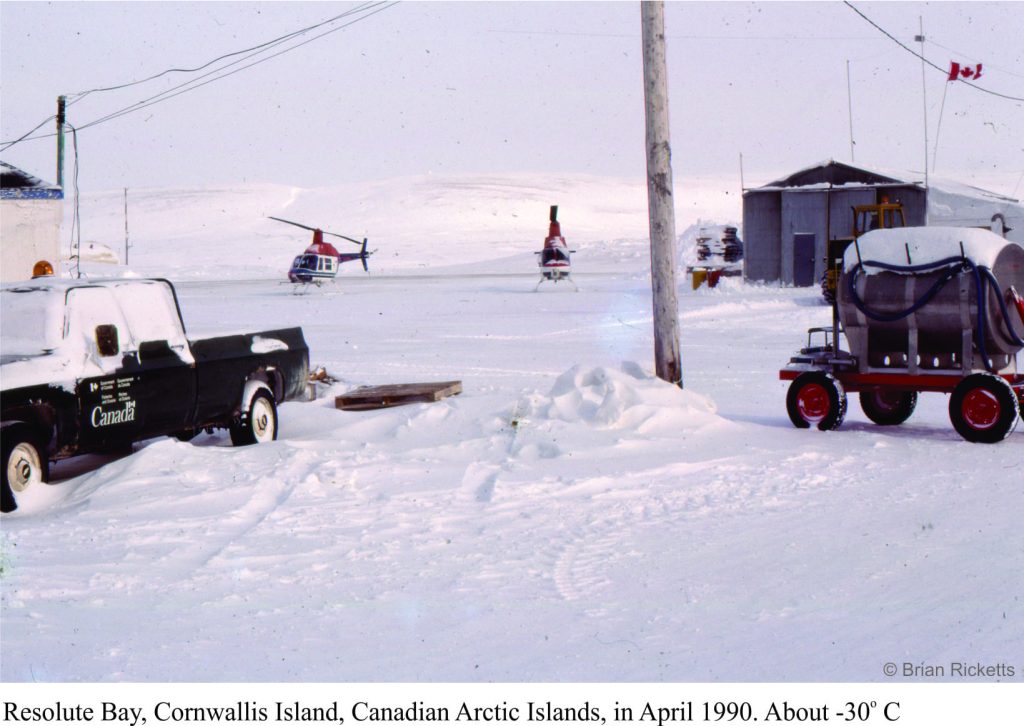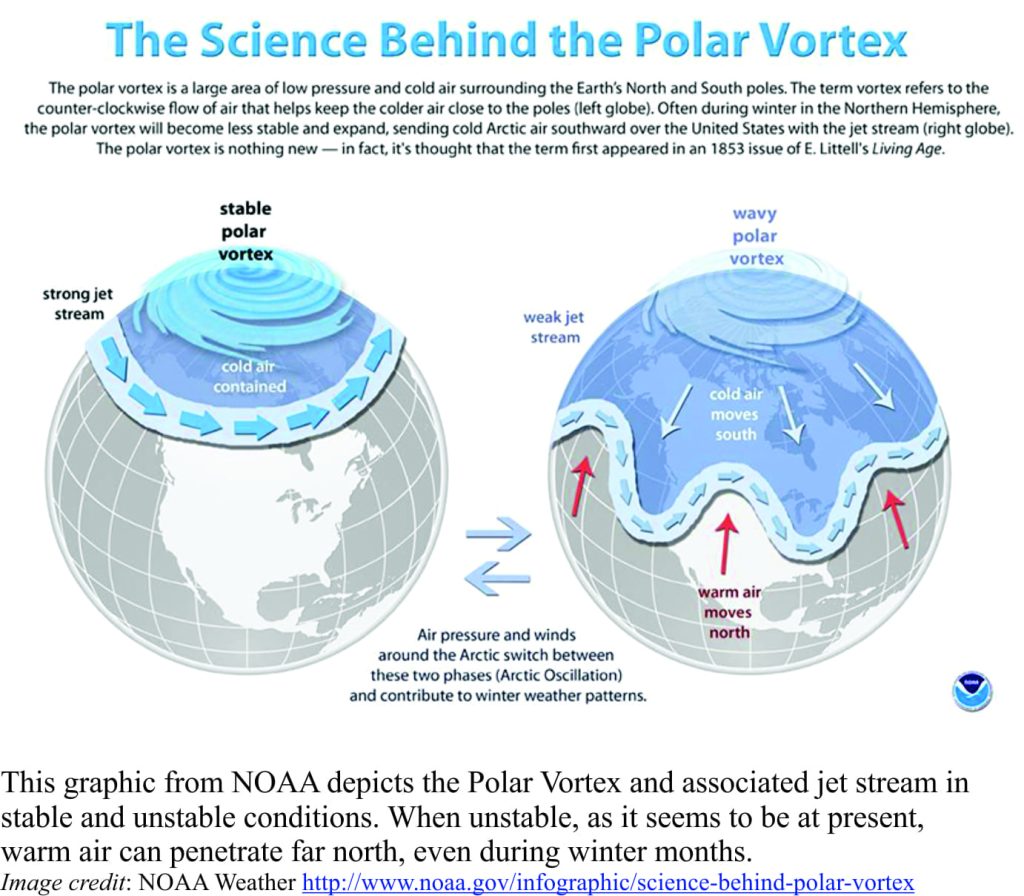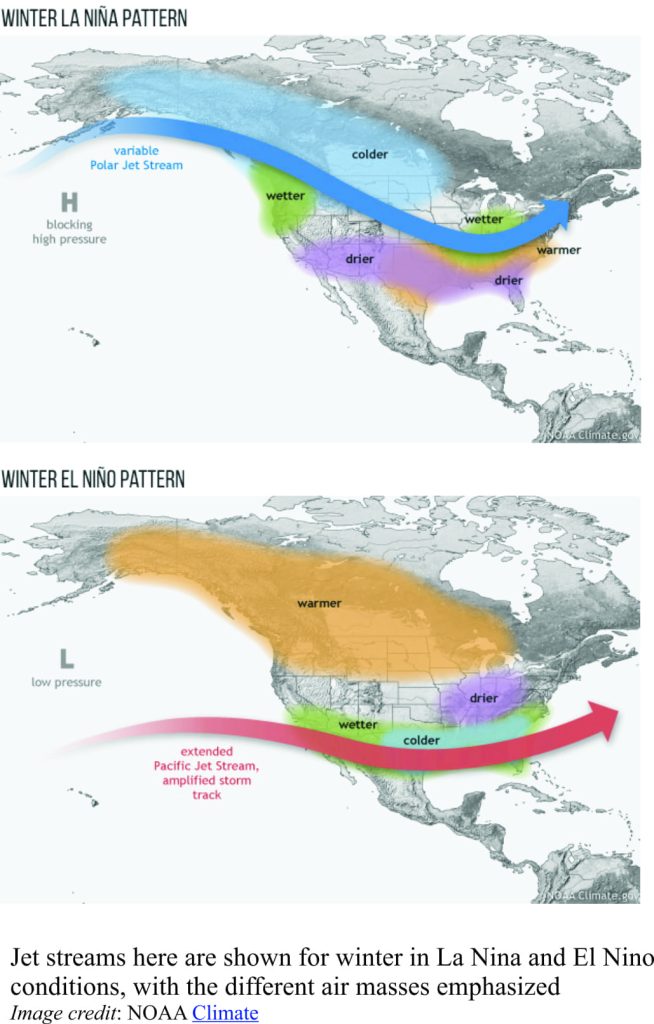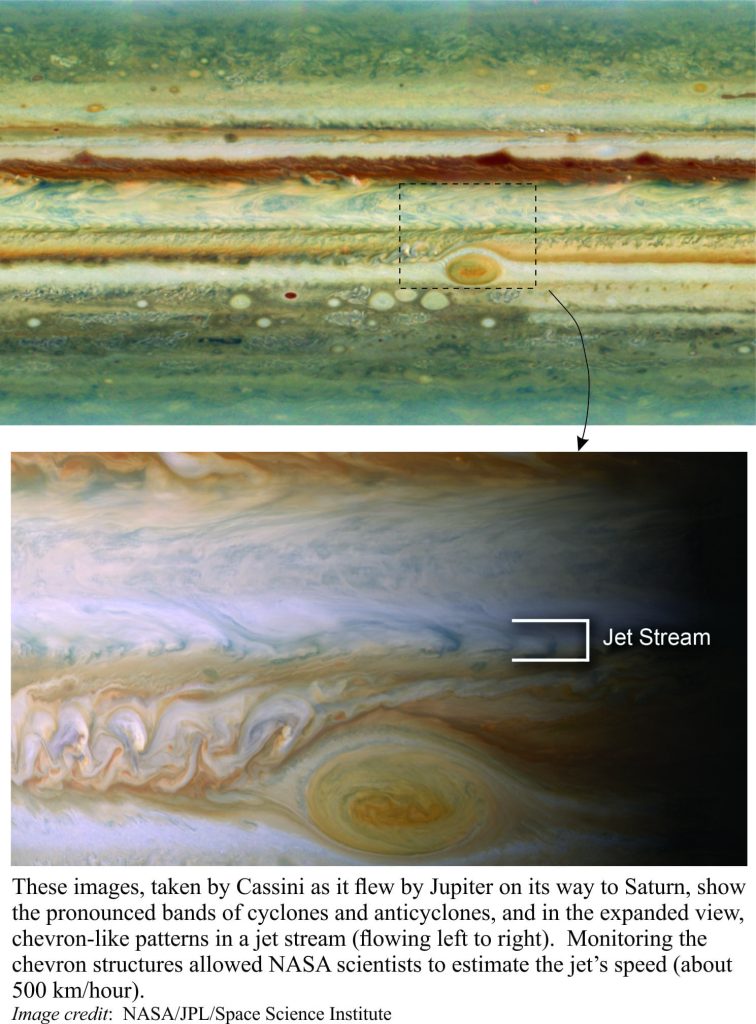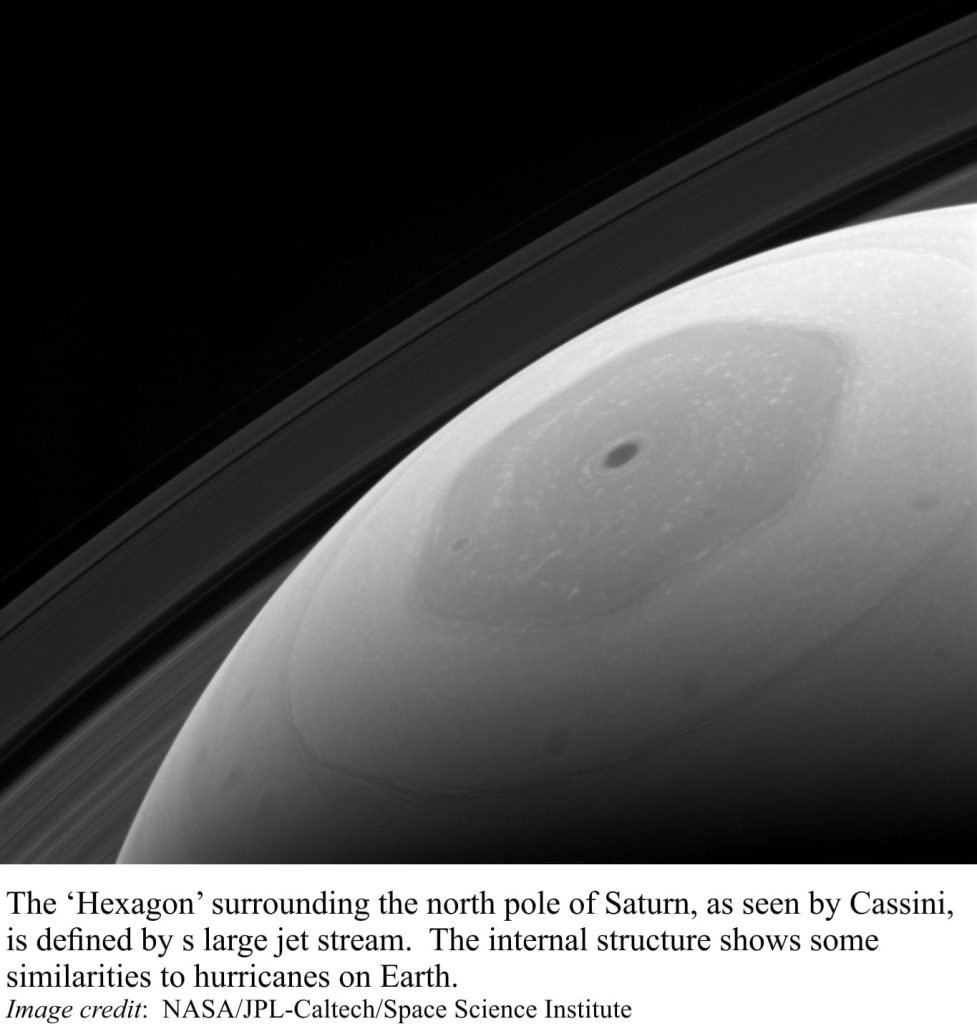The Polar Vortex. Sounds like scenes from the apocalyptic movie The Day After Tomorrow; a bit of a down-draft and everything freezes. The real vortex refers to a low-pressure system with a cold, west-to-east flowing (counter clockwise) air mass that hovers over the north pole (there is also a vortex over Antarctica). When stable, the cold air remains in the north, contained by the polar jet stream. When unstable, as sometimes happens in winter, the polar jet stream meanders such that cold air can penetrate much farther south.
February is deep winter in the Arctic, and yet current temperatures there are hovering around zero degrees C; almost T-shirt weather. Warm air masses are being allowed to enter this normally frozen domain, while the cold snaps (March 2018) are wedged into southern Canada, USA and Europe. Arctic winter temperatures are abnormally high, significantly higher than past recorded temperature anomalies. Is something happening to the Polar Vortex; is it in a state of decay? And if so, is this process part of some long-term climate change, or is it just another anomalous spike on the climate record? None of the answers proffered so far are definitive, at least from a scientific point of view (mind you, the media are having a field day). Science will go some way to resolving this problem by observing how jet streams respond over the next few decades.
Jet streams are narrow, stream-like bands of fast-moving air in the upper levels of the troposphere, which is the layer of air we live in. The atmospheric layer above the troposphere is the stratosphere. The boundary between these two is called the tropopause, and jet-streams are located at or just below this transition, generally at 9-16 km altitude. They are the product of an interaction between cold (polar) and warm (tropical, sub-tropical) air masses. On earth (and yes, other planets with large temperature differences in their atmospheres also have jet streams) there are two streams in each hemisphere; the polar, and subtropical jet streams. Polar jet-streams have the strongest winds because that region has the greater contrast between cold and warm air; they are also strongest in winter. Wind speeds of 400km/hour are possible at the center of the jets, decreasing to 120-140 km/hour on the margins. Earth’s rotation dictates that jet-streams always flow west to east, albeit with some twists and turns.
Japanese meteorologist Wasaburo Ooishi (early 1900s) was the first to confirm the high altitude high-speed winds while experimenting with weather balloons, although folk interested in such things had an inkling that something was going on aloft because of the way volcanic ash from very high eruption columns was dispersed (Krakatoa being a good example). More balloons, and the proliferation of airplanes confirmed the existence of jet-streams. It is now common place for long-haul flights to take advantage of jet-streams; they help reduce flight times and fuel consumption.
Jet-streams form at the boundaries of cold and warm air masses, which means they reflect, and to some extent control, major weather patterns. Their ribbon-like girdle around the hemispheres is quite sinuous, and in animations of wind flow they look serpentine or wave-like. The meanders, twists and turns develop because of different temperature profiles over land and sea; to this extent, jet-streams in the north are stronger than their southern cousins because the continental land mass there is much greater. The jets themselves move north and south with the seasons and changes in temperature, and meanders come and go, sometimes disappearing completely for brief periods.
Jet-streams have a direct effect on large-scale weather patterns, and knowing where they are, and whether they are weak or strong, is now an important part of weather forecasting. They, in turn are affected by El Niño (warm) – La Niña (cool) cycles across the equatorial Pacific Ocean (3 to 7 year cycles). The northern polar jet stream moves south during the winter because the contrast in temperatures increases between the polar and subtropical-tropical regions. The projection of meander loops farther south is also responsible for the intense cold weather sometimes foisted on North America and Europe. The opposite can occur in the northern summer, when the jet streams are weaker because of a lower contrast between polar and equatorial air masses. Over Europe, extreme north-south shifts in the North Atlantic jet stream can mean the difference between high rainfall and flooding, or hot dry conditions (and lately, increased wild-fire risk).
Jet streams have also been observed on Saturn and Jupiter. The atmospheres on both planets are very different to those on earth (mostly hydrogen and helium), but they do respond to temperature differences. Jupiter’s cyclones and anticyclones are familiar in its bands of swirling gas. The exceptionally neat stripiness of Jupiter is actually the result of jet streams moving in narrow bands around the planet; winds here have been clocked at over 500 km/hour.
Some jet streams on Saturn are even more massive than their Jovian counterparts. One equatorial jet is about 70,000 km wide (Earth’s diameter is 12,742 km), and travels at a phenomenal 1650 km/hour. Even more eye-catching, is the hexagonal-shaped jet stream at Saturn’s north pole, inside which is a massive hurricane-like storm with an eye almost dead-centre. The hurricane shows some similarities to atmospheric events on Earth, however the Hexagon has no obvious analogue on Earth, and its origin is still a mystery. Jay Thompson points out, in a NASA Newsletter, that, apart from the differences in atmospheric composition, the atmosphere of Saturn is very thick (1000s of km) whereas that on earth is skinny. So, the dynamics of atmospheric gas flow and heating are very different.
Back to Earth. There is some evidence that the Polar and North Atlantic jet streams are less stable now than they were several decades ago; weather extremes seem to be more frequent. Data from a study of tree ring records covering the last 300 years, has been interpreted as indicating greater variability in the North Atlantic Jet (primarily an increase in the sinuous shape of jet stream meanders) that coincides with extremes of heat, drought and wild fires in various parts of Europe. These kinds of extremes are not unlike those currently witnessed in north polar regions. Whether such changes are part of a longer-term trend in weather extremes, as predicted by some climate models, is still uncertain from a scientific perspective. More analyses of the tree-ring kind are required to improve the level of confidence in explaining past and present climate conditions. Watching the trends in polar temperatures, jet stream loci, and the associated weather anomalies will be interesting.
